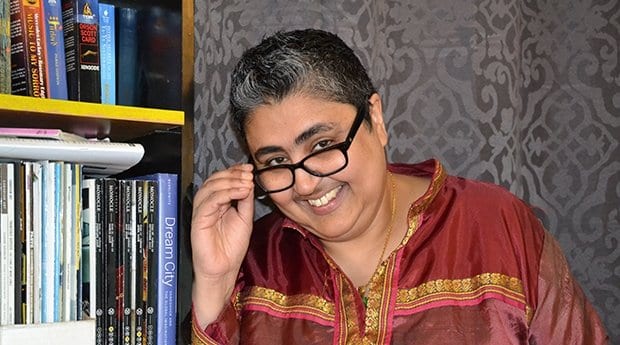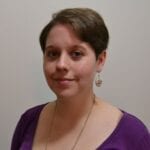Born in Kampala, Uganda, to Gujarati parents, Kalyani Pandya arrived in Winnipeg as a refugee in the 1970s following then-president Idi Amin’s expulsion of Asians from the country. When she came out as a lesbian in the 1980s in Winnipeg, she faced prejudice not only from society at large, but also from the very conservative South Asian community she was a part of.
“At that time, being gay was associated with having AIDS,” she says. “In that community at that time, for me and a lot of people like me . . . it was a very scary time.” She recalls there was also a tremendous amount of pressure to conform to a specific ideal. “[South Asian immigrants] had a strong mandate for people in that community, I feel from my experience, and that mandate was Medicine, Marriage and Money.”
In the days before the internet became ubiquitous, one of the tools Pandya had at her disposal was a Usenet newsgroup. As she connected with other LGBT-identified South Asians, she began to notice a disturbing trend of gay men posting want ads for lesbians to enter into marriages of convenience with them. “What bothered me about this was that some of these gay men were not in dangerous situations. They were not in situations where they were going to be losing their jobs, losing their families; they had the privilege of citizenship,” she explains.
To Pandya, it seemed these marriages were designed to protect the privilege of the men, allowing them to benefit from patriarchy while using the women to maintain their cover. In response, she wrote a nine-part story exploring the phenomenon and began sending it, serially, to other newsgroup members. “It really gave another perspective on the marriage of convenience, and whose convenience, and at what cost,” she says.
Now, two decades later, Pandya’s newsgroup story has become the basis for a one-woman show. Debuting at the NAC Fourth Stage on May 15 as part of the Ottawa Storytellers’ 2014 season, The Arrangement, the Marriage, and Me tells the story of two women, Anila and Kamal, who, despite living worlds apart (Anila in Delhi and Kamal in Winnipeg), find they are connected in an unexpected way. Both characters are based on real people; Kamal is Pandya, and Anila is a woman who had a huge impact on her life.
“I just thought that there might be a power in sharing it,” Pandya says of her decision to make their story public. “There might be other people in this situation for whom this person could also be a beacon of hope, unbeknownst to her. This person that fleetingly came into my life and showed me that being queer is very South Asian . . . That woman toppled patriarchy in the Gujarati community in one fell swoop. What she did took a courage that I think very few people have.”
A standup comic and storyteller, Pandya wins over her audience with humour and uses it to impart her message. “I feel like this project is so important now, and I feel like it’s really an imperative now to tell the stories of our community,” she says.
In many countries, especially those with colonial histories, being gay is seen as the product of Western influence. This way of thinking can cause LGBT people to become disconnected from their cultures, something Pandya experienced firsthand when she came out. “That is a huge betrayal, for someone to say that what is innate to you is actually alien to you,” she says. “I think it’s important that this story get out there to show that being queer is not a white thing; it’s not an American thing. It’s just life and it’s all over the world.”
The Arrangement, The Marriage, and Me
Thurs, May 15, 7:30pm
NAC Fourth Stage
nac-cna.ca


 Why you can trust Xtra
Why you can trust Xtra


